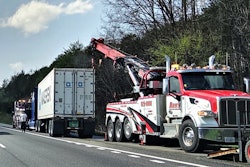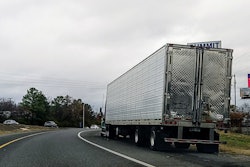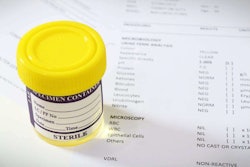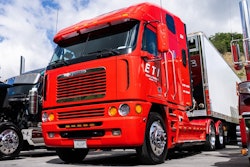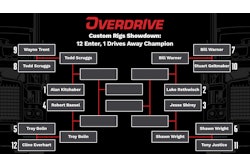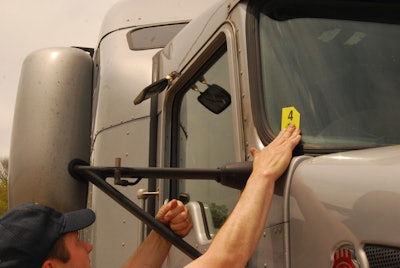
If you are operating under your own authority, you are required by federal law to carry commercial auto liability coverage, usually $750,000 to $1 million, hazmat-hauling carriers much more.
The Federal Motor Carrier Safety Administration sets the minimum requirement for liability coverage based on the criteria submitted when the authority was processed. This is to protect you in a major accident. You may want to consider higher coverage, since a catastrophic truck accident can cost many millions of dollars. Many shippers require carriers they use to carry $1 million in liability.
Because primary liability insurance is the law, it’s standard in lease agreements. Remember, though, that just because your carrier is insured against damage you cause, it won’t necessarily be on your side in case of an accident. For that reason, some leased owner-operators opt to buy liability insurance independently of their carriers.
For most, however, having liability taken care of is one of the biggest advantages to leasing.
Owner-operators who switch to their own authority often are surprised by how costly, complex and time-consuming liability coverage can be, especially as a startup. New independents have few reputable choices for liability coverage, and those that do offer it to new authorities demand a high premium.

While a damage policy commits the insurer to paying only the current value of the truck, a typical primary liability policy commits the insurer to paying as much as $1 million if something goes wrong. Moreover, the insurance industry considers owner-operators to be higher risks than fleets, and that earns the insurer only about $10,000-$15,000 a year in premiums from established one-truck businesses.
Trucking insurance is a fixed cost that every owner-operator must pay and, behind a truck payment, is often the highest fixed cost for a trucking business. A multitude of factors influence how costly an owner’s insurance premium will be, and a good many of those are totally out of their control. This makes insurance a big pain point among owner-operators, particularly new ventures that have yet to prove themselves in business.
Unfortunately for many, despite doing everything right and avoiding crashes, citations and anything that would lead to an insurance claim, premiums still often go up each year at renewal. That's been the story broadly speaking for commercial auto insurance, including trucking insurance, since the start of the 2020 pandemic year, as this chart from early 2025 reporting illustrates.
Some of the bigger factors affecting an independent’s liability rates are the type of freight, age of equipment and the business itself, typical length of haul and states normally driven through.
Drivers with trucks under 15 years old often don’t have a problem getting insured. Insurers often won’t accept older trucks or will want them inspected.
Other factors concern the driver: home base, age, driving record, length of trucking experience, insurance claim history and length of time with the same insurer.
Owner-operators can help themselves by demonstrating they have a solid business plan for the short and long term, including a maintenance schedule and routine safety procedures. Bundling different coverages with one insurance company also can help, since most insurance providers offer combined deductibles, meaning in the case of an accident, the driver will have to pay only the typical $1,000 deductible once to cover a damage and liability claim.
With more fleets adopting in-cab video cameras, both road-facing and driver-facing, it’s possible in-cab video systems one day will become a precondition to getting insured -- or more likely a factor that can lead to premium discounts, something happening in some quarters today.
Some insurance providers, while not offering such premiums, will offer owner-operators a discount on a dashcam purchase or, in rare cases, pick up the cost themselves.
[Related: How to navigate the trucking insurance market to save at renewal]
No insurance magic bullet for independents with authority
If you are contemplating applying for your own authority one day or want to keep yourself in the best possible position should you ever decide to go that route, here are the best things you can do to help get the lowest possible insurance premium. They are prioritized beginning with the most important.
For the previous 5 years:
- Have a 100% (or as close as possible) clean motor vehicle record (MVR)
- No distracted driving, failure to yield/stop, speeding over 25 mph, or at-fault rear-end accidents
- No auto insurance liability or physical damage claims (this includes while as an employee driver for a carrier)
- Have your license in the same state you reside in
- Have your CDL for at least 1 year (preferably up to 5 years)
- Establish your business in the same state you reside in
- Have a good credit score
Practicing good safety and being proactive with insurance policies, at the most basic, will help in reduction of premiums over time. An analysis of four carriers who all experienced premium cost reductions in a year when most saw increased premiums anywhere from 20%-40% found none of those carriers had to adjust policies to increase their deductibles, lower the stated value of their trucks to reduce physical damage insurance costs, remove coverage or anything else.
At renewal, their premiums simply went down based on their performance.
The four carriers represented a somewhat diverse cross section of truck owners. For all, their perceived risk for their insurers declined due to common achievements among all four:
- Company CSA scores did not increase.
- No driving/moving violations
- No adverse roadside inspections or non-moving violations
- No liability insurance claims
- No physical damage insurance claims payments
- No cargo coverage claims
To go the way of these four examples for a premium reduction at renewal, be proactive to maintain a low CSA score, avoid moving and non-moving violations, and avoid claims, even on your personal auto policy. In the event of a claim, be cooperative with the adjuster; be a defensive driver; and take advantage of any programs offered by an insurance company to verify safe driving practices. Employing these practices could hasten insurance premium reductions.
Read next: Physical damage, other important trucking insurance coverages



